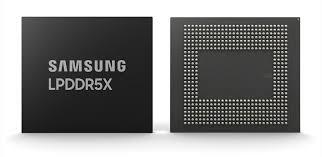A fresh report says that Samsung now has the incentive to go all out and develop the next generation of RAM chips which would use the LPDDR6 RAM standard. What gives Samsung the incentive to accelerate the development of its next-gen RAM is the news that China’s Innovative Memory Technology (CXMT) has completed developing its LPDDR5X RAM. As a result, CXMT is reducing the lead that Samsung has on them when it comes to RAM chips.
Samsung already has a potential customer for its LPDDR6 RAM chips as Qualcomm reportedly will support the new RAM chip with its upcoming top-of-the-line Snapdragon 8 Elite 2 application processor (AP). This is the SoC that will be powering the Samsung Galaxy S26 Ultra in all regions early next year. It will be manufactured by TSMC using its third-generation 3nm node (N3P). Of course, Samsung is expecting to sell the LPDDR6 RAM chips to many more clients.

Samsung used the 12nm LPDDR5X RAM chip on the Galaxy S25 Ultra. | Image credit-Samsung
CXMT may have put pressure on Samsung to move ahead to the next-gen RAM at a greater speed than it might have otherwise. Keep in mind that based on reports from late last year and early this year, CXMT only has 5% of the global RAM market. South Korea’s SK Hynix is the leader having topped Samsung with approximately 36% of the global RAM market. Samsung is next with a market share in a range between 33.7% – 34.4%. That leaves Micron Technology and its 24.3%-25% slice of the global RAM pie.
The LPDDR5X RAM chip built by Samsung and used on the Samsung Galaxy S25 Ultra for both 12GB and 16GB variants was manufactured on Samsung Foundry’s 12nm process node. Earlier versions of Samsung’s LPDDR5X RAM chip, like the one used on the Galaxy S23 Ultra, were built by Samsung foundry using its 14nm process node.
Read the latest from Alan Friedman

















